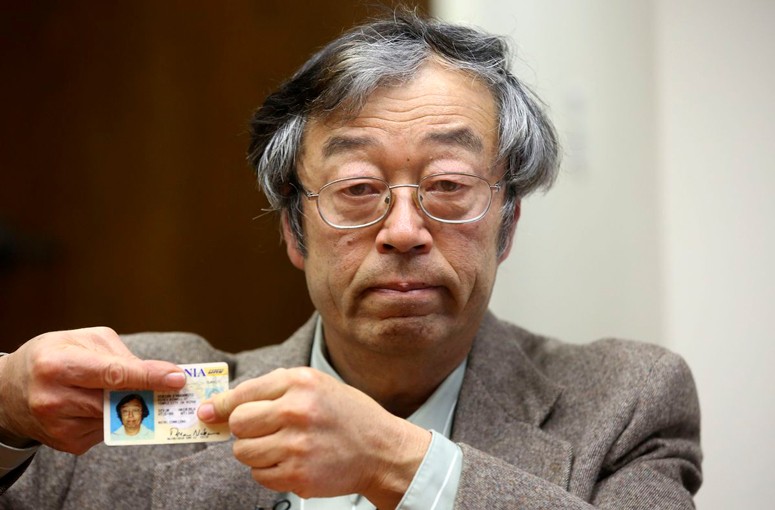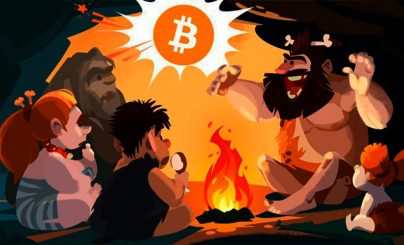The digital world has entered our lives so tightly that news sites and TV programs do not overlook the bitcoin exchange rate, the sale of a painting in the form of an NFT fichaor the next DeFi project. The history of the emergence of the very first cryptocurrency in the world dates back to 2007. Since then, a full-fledged industry has emerged – dozens of popular coins, blockchain ecosystems, trading platforms, exchange services, wallets for storing assets.
At the origins of the digital world is a semi-mythical person – Satoshi Nakamoto. No one has seen him and does not know what the developer of cryptocurrency No. 1 looked like. Only e-mail correspondence with like-minded people, the white paper (a technical document describing the protocol for building a payment system) of the Bitcoin blockchain and the elaborate idea of virtual money remain. But Satoshi Nakamoto was not alone in developing digital assets. Ideas existed long before the programmer started writing code.

The creation of Bitcoin can be divided into stages. Most of the time is only the preconditions, the ideas that Nakamoto used in developing the principles of building a distributed network, the blockchain.
History of the first cryptocurrency
Programmers, cryptographers, mathematicians, economists, financiers were involved in the development of digital assets. Each of them made discoveries in different industries, conducted research, wrote papers on certain topics. These elements became the basis for further activity. The prototype appeared long before Satoshi Nakamoto’s work on Bitcoin. However, he was the first to manage to systematize developments in the field of cryptography, mathematics and described the rules of the blockchain. The history of the creation of cryptocurrency includes:
- Prerequisites – the development of basic concepts.
- First experiments – developing the idea of virtual money, creating a prototype.
- Work on Bitcoin Satoshi Nakamoto – launching the first cryptocurrency.
- Creation and development of altcoins – alternative coins (Ethereum, Ripple,Bitcoin horquillas and others).
Prerequisites for creation
The first developments for future digital assets appeared in the 60s of the twentieth century. Among cryptographic scientists, a world information network was discussed. The practical realization of this idea was carried out 20 years later. In the 80s brokers exchanged data with the help of the information network. It helped to make decisions faster during trading on the stock exchange.
5020 $
bonificación para nuevos usuarios
ByBit proporciona condiciones cómodas y seguras para el comercio de criptomonedas, ofrece comisiones bajas, un alto nivel de liquidez y modernas herramientas para el análisis del mercado. Admite operaciones al contado y apalancadas, y ayuda a operadores principiantes y profesionales con una interfaz intuitiva y tutoriales.
Gane una bonificación de 100 $
para nuevos usuarios
La mayor bolsa de criptomonedas donde puede iniciar de forma rápida y segura su viaje en el mundo de las criptomonedas. La plataforma ofrece cientos de activos populares, bajas comisiones y herramientas avanzadas para operar e invertir. La facilidad de registro, la alta velocidad de las transacciones y la protección fiable de los fondos hacen de Binance una gran opción para los operadores de cualquier nivel.
During the same period, the idea of virtual currency – digital money – emerged. Research was conducted in the context of exchange trading. The following concept was proposed:
- Fast purchase of securities.
- Work with financial assets and derivatives.
- Optimization of brokers’ activity.
American cryptographers advanced farthest in the realization of the idea of digital money. These are scientists Stefan Brands and David Chaum. They developed the principles of anonymity of payments in virtual currency. Also, specialists proposed the first protocols of digital assets.
The first experiments
To the practical realization of ideas, Stephan Brands and David Chaum began in 1990, when they created the DigiCash project. The company specialized in the work of the eCash monetary system with a fundamentally new approach to privacy and data protection using cryptographic methods. Unlike current cryptocurrencies, eCash had a centralized management principle, so this system cannot be considered a full-fledged digital asset in the modern sense of the meaning.
The platform existed until 1998 and stopped working due to the bankruptcy of the DigiCash management company. However, the idea of anonymous payments was noticed in the cipherpunk society (an informal association interested in cryptography and anonymity in the network), to which Satoshi Nakamoto belonged.
Adam Back developed the HashCash technology in 1997. This is another step towards the creation of cryptocurrency. The technology was resistant to DDoS attacks, spam. At the heart of HashCash is the proof-of-work system, or PoW. Bitcoin implements a similar protocol with some changes.
Hal Finney, a well-known personality in the digital world, worked on HashCash. He created a new algorithm for controlling electronic payments. The development is based on hash chains.
Some people in the crypto community claimed that Finney could be the creator of bitcoin. However, this theory was discarded when he revealed his correspondence with Satoshi.

The work of Adam Beck and Hal Finney is seminal in blockchain. Based on HashCash and the technology used, two other scientists developed systems in 1998:
- Nick Sabo – lawyer, economist, programmer, digital environment researcher created the “digital gold” Bit Gold.
- Wei Dai – engineer, programmer, member of the cryptopunk community came up with b-money.
Both developments were made independently of each other. A decentralized registry was used at the core. Bit Gold and b-money are prototypes of cryptocurrencies. Later, Hal Finney created the blockchain. Together with Satoshi Nakamoto made a lot of efforts to make the first cryptocurrency come to life.
The development of Bitcoin
Satoshi Nakamoto systematized the projects of the late 90s. The developer had his first idea in 2007. The basis is a decentralized chain of blocks. The result was the Bitcoin 1.0 project.
The main stages of creation:
- 2008 – publication of a white paper in the newsletter “Cryptography”.
- 2009 – in January the development of the first Bitcoin software client version 0.1 was completed. The Genesis block (initial) of the network results in the creation of the first 50 BTC.
The date January 12, 2009 marks the first transaction. Satoshi Nakamoto transferred 10 BTC to his colleague and associate Hal Finney. A new era of digital money began – a practical realization.
The first version of Bitcoin worked only on the Windows operating system. After the creation of the client version 0.1 Nakamoto and colleagues began to modernize the technology. The discussion of the finalization was conducted by correspondence on forums, in e-mail messages. However, in reality, no one has seen Satoshi Nakamoto. There is still no information about the discoverer. There are several theories: a number of people, including Hal Finney, have been linked to Nakamoto, but none of them have claimed responsibility. It could be that Satoshi is a group of developers and programmers.
In September 2009, the first bitcoin to fiat currency exchange was executed. Programmer Marty Malmy sold 5050 BTC to another user of the network. He received $5.02 on his PayPal account. The price of electricity spent on minería is taken as a measure for bitcoin.
In November 2009, bitcoin.org was created, around which the first community of like-minded people was formed. On its forum the development of the project was discussed and digital money was popularized.
At the end of the same year, a brand new Bitcoin 0.2 client was developed with support for major operating systems. Among other innovations:
- Generation of blocks by several parallel streams.
- Increased efficiency of mining.
From that moment on, ordinary users on home PCs started mining.
By the summer of 2010, Bitcoin version three was released. The number of users grew, despite the increasing complexity of mining coins. There was a search for new ways of mining, and the first farms on video cards appeared.
The Bitcoin blockchain was first attacked on August 15, 2010. Attackers identified a serious security bug, generated 184 billion bitcoins. The problem was due to a lack of transaction verification when adding to the network.
The bug was fixed, the illegal transaction was canceled. A new protocol was used to improve the security of the blockchain.
At the end of the year, the first pool of miners was formed – Slush`s Pool. Competition among miners led to the emergence. Personal computers no longer satisfied miners, the requirements for the performance of equipment increased.
The end of 2010 was marked by 2 more events – the client version 0.3.9 was released, Satoshi Nakamoto left the project for no reason and disappeared. Some associates moved to other directions, worked on the creation of altcoins.
When the cryptocurrency appeared, the price was too low. Miners mined coins more for the sake of interest than for capital accumulation, enrichment. The reason is the same – the lack of high costs. In addition, there was no opportunity to spend the mined bitcoins.
In May 2010, programmer Laszlo Heinitz made the first purchase of goods for cryptocurrency. He bought 2 pizzas for 10,000 BTC. At the exchange rate of the time, this amounted to $50. The purchase was organized through a forum. One of the participants ordered a pizza and sent it to Laszlo, received the promised amount for it. Since then, the crypto community celebrates the so-called Bitcoin Pizza Day on May 22.

Since then, the price of the cryptocurrency has gotten bigger and bigger. The purchase price in dollar equivalent at different times is shown in the table.
| Date | Price of 10,000 BTC in US dollars |
|---|---|
| May 2010 | 50 |
| July 2010 | 600 |
| November 2010 | 2600 |
| June 2013 | 1 000 000 |
| May 2017 | 20 000 000 |
| November 2017 | 100 000 000 |
| January 2021 | 400 000 000 |
| October 2021 (21.10.21) | 660 000 000 |
Laszlo Heinitz’s purchase is being called the biggest folly in history. It is the most expensive food delivery service in the world ever. The history of the emergence of cryptocurrency no longer contains deeds to regret so much.
The development of altcoins
Satoshi Nakamoto left the project, having done the most important thing – gave an impetus to the development of a new industry. Further the community did not need his services. Professional programmers came to the project, and the systematic development of blockchain began.
The emergence of new developers led to a problem:
- Part of the team proposed to move forward systematically, to use the old base.
- Innovators saw the need to make fundamental changes to the blockchain.
The second category of developers led to the development of parallel branches of the blockchain. The world’s first cryptocurrency is called bitcoin, offshoots and forks are alternative coins, altcoins.
In 2011, developer Amir Taaka proposed the BIP technology, which led to the improvement of the blockchain, correcting errors that existed since its creation. Thanks to the created developments, it is possible to create alternative coins. Bitcoin forks emerged.
| Altcoins (popular types) | Características |
|---|---|
| Litecoin | Higher transaction speed, lower cost, easier mining |
| Cardano | Platform for Dapps, smart contracts |
| Ripple | Coin issue at project launch, only 100 billion XRP, with time their number decreases (commission is destroyed) |
In 2012, part of the project developers were working on solving the blockchain size problem. CryptoNote technology provided the creation of altcoins – Monero, Bytecoin. They have higher protection, faster blockchain unlike bitcoin.

At the end of 2012, the first cryptocurrency wallets emerged – offline storage, browser-based versions.
New technologies
Three years after the development of the first cryptocurrency, altcoins emerged. The main groups:
- Innovative.
- Stable.
- Anonymous.
Some coins are based on technologies that differ from Bitcoin in capabilities. Ethereum is based on blockchain with the function of creating new tokens for other projects, contratos inteligentes.
Polkadot is a new stage of development as this network has more capabilities than Ethereum. Blockchain can serve as a base for an ecosystem. New innovative coins include IOTA. The project has a high speed of transactions, a higher level of payment protection.
Stable coins – tied to fiat money or tangible assets. Stablecoin – Tether (USDT), Dai (DAI), TrueUSD (TUSD), Binance USD (BUSD) and others.
Anonymous coins – protect the identity of owners, hide transactions. Confidential altcoins – Monero, Dash.
Open code
The digital world is an asset of all mankind. Cryptocurrency is based on open program code. Anyone who understands programming and networking can take the Bitcoin network as a basis and develop their own project. Thanks to the open code, altcoins emerge – some of these coins are built on the finalized BTC protocol.
Ethereum
Canadian developer Vitalik Buterin has taken digital assets to a new level. Ethereum provides many more features compared to Bitcoin:
- Smart contracts – an algorithm whereby parties can exchange assets, other valuable items.
- It takes 10 minutes to create 1 block in Bitcoin, 12 seconds is enough for Ethereum, accordingly the transfer is confirmed faster.
- The formation of other decentralized applications based on blockchain (DeFi).
Coins are no longer interesting only to traders and investors. Entrepreneurs, musicians, poets, artists, and ordinary users turned their attention to the digital world.
Bearish trend
The cryptocurrency market is just beginning to form. Classical approaches do not work here. The price depends on different factors:
- Demand – the higher it is, the more expensive the coin is.
- Political activity in a certain region or country (ban, permission, full legalization).
- Usefulness for the real sector of the economy.
- Capitalization level (the amount of funds in the coin) – the higher it is, the more confidence in the coin.
- Technical features of blockchain – use in DeFi, realization of smart contracts.
- The complexity of mining (for coins that have mining embedded in them).
In 2021, bitcoin reached an all-time high – in April, the value of BTC reached $64.8 thousand. After that, the price fell sharply, there was a correction. In the fall of 2021, the cost of bitcoin rose again and reached $66 thousand on October 21 – a new historical maximum (at the end of October).
Cryptocurrency today
Digital assets are a huge ecosystem with its own laws and rules. Twelve years after the emergence of Bitcoin, one thing has become clear – this world will not change. Virtual money is becoming more than just a tool for trading or a means for mutual settlements. Cryptocurrency is blending into the real economy and financial system. States recognize digital assets as property (Russia did it on January 1, 2021) or legal tender (El Salvador).
The banking sector is attracted by fast payment mechanisms. Central banks in different countries are developing CBDC digital currencies. Smart contracts attract entrepreneurs, lawyers, economists. It is possible to formalize any contractual relationship with automatic execution.
Cryptocurrency also realizes the function of accumulation, saving capital. This is a tool for investment.
Prospects for development
It is difficult to predict the rate and the further vector of realization. The main trends: increasing the confidentiality of coins, the development of smart contracts and the market of decentralized finance. Slow blockchains are being replaced by protocols with high transaction speeds.
Programming teams are working on next-generation protocols, optimizing second-level solutions for existing blockchains. Projects with progress in anonymity and additional features have great prospects.
Another trend is startups. They use digital assets to raise funds for project development, issue blockchain-based tokens.
Cryptocurrencies can become a promising substitute for fiat money in developing countries with high inflation.
Resumen
Bitcoin was created in 2009. In 12 years, the number of altcoins has exceeded 12 thousand cryptocurrencies. Not all projects have achieved great popularity, but the trend is set. Now anyone can buy coins, engage in trading (trading applications of crypto exchanges are available in a smartphone or PC), digitize an asset (issue a token), use decentralized finance.
Let Satoshi Nakamoto continue to remain unknown, but his business will develop and prosper.
Preguntas frecuentes
📝 How does a smart contract work?
Conditions are set, which are monitored by a program using a special algorithm and implements the agreements when the goal is reached.
🙎♂️ Laszlo Heinitz bought a pizza with coins from a pizza shop?
He offered 10,000 BTC on a forum to whoever would sell a pizza for cryptocurrency. One of the users bought food at the pizzeria with fiat money and sold Laszlo for coins.
❕ Why does bitcoin continue to be the most popular digital asset?
Despite problems with transaction speeds and mining, liquidity and trust are much higher. The Bitcoin blockchain is evolving, developers are fixing problems.
❓ Why did Satoshi Nakamoto work incognito?
No one knows that. There are different versions, but none of them has full confirmation.
🟡 Where can I see a photo of the Bitcoin developer?
There are no photos. Almost nothing is known about Satoshi. The photo online belongs to Dorian Nakamoto, a Japanese-born American engineer.
¿Hay algún error en el texto? Resáltalo con el ratón y pulsa Ctrl + Entra.
Autor: Saifedean Ammousexperto en economía de las criptomonedas.















